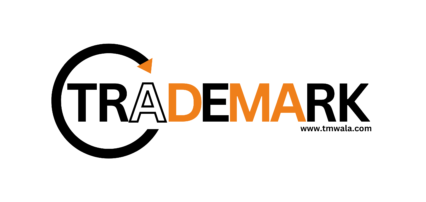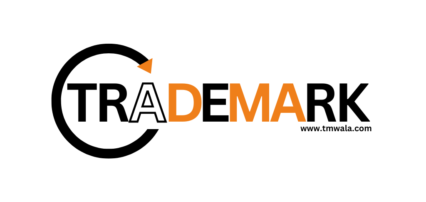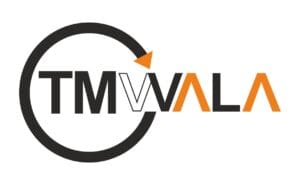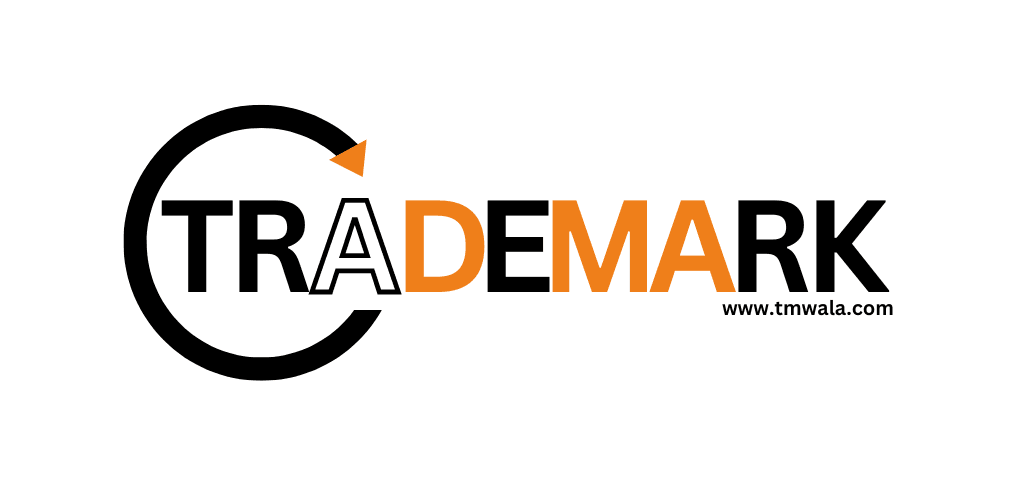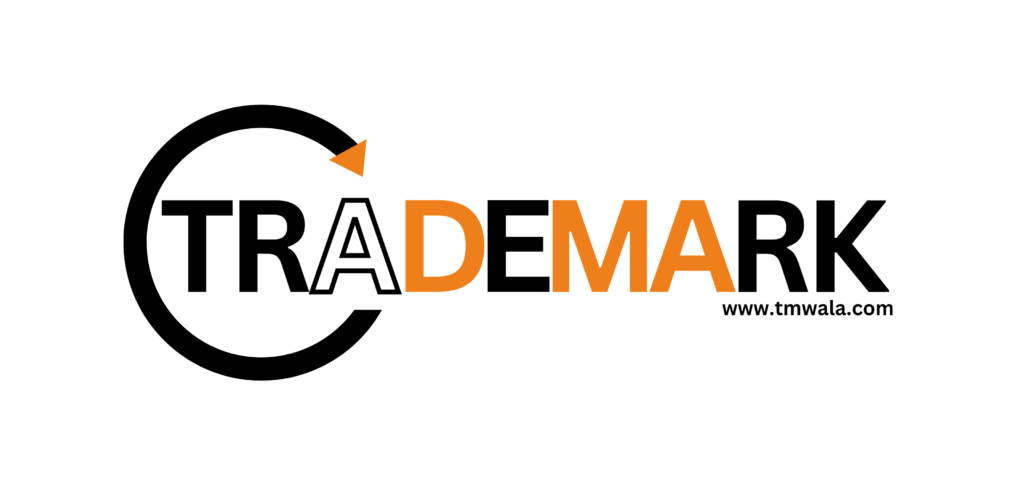Introduction
Think of trademark as your brand’s unique footprint which distinguishes your brand from the others in the market. The term trademark has been derived from the words ‘Trade’ meaning business activities & ‘Mark’ meaning any sign or symbol. Let’s dive in to get more about trademark and trademark registration.
Thus, a trademark is any symbols, words, phrases etc., used in relation of trade or business which distinguishes the goods and services of one person from the other. Example: The Nike Swoosh & the Apple logo. Trademarks are instrumental in ensuring business’ success as it helps customer identify your goods and services in the pool of goods and services present in the market. It protects brand’s unique identity & reputation and helps build trust and loyalty amongst customers. Trademarks are an indispensable tool to ensure business success.
What is a Trademark?
Trademarks are Distinctive Source Identifiers i.e., these are symbols, words, phrases etc. which make your business unique and help customers identify the goods and services manufactured, sold or rendered by you. Basically, any indication that helps customers differentiate between the goods and services of two sellers in the market can be termed as a trademark.
Let’s now understand, what all can be registered as a trademark:
- Word/Names: Calvin Klein, Google
- Logo: Nike Swoosh, Apple Logo
- Symbol: Starbucks Logo, McDonalds Logo
- Slogan: Amul-The Taste of India, L’Oréal Paris-Because You’re Worth It
- Mascot: The Amul Girl
- Colours: Tiffany Blue
- Shape of Goods: Coke Contour Bottle, Toblerone Chocolate
Fun Fact: even smell, sound, taste, feel, personality etc., can come under the purview of trademarks.
What are the essentials features of a Trademark?
For anything to qualify as a trademark, it must meet the following essential criteria:
- Uniqueness: A trademark must be novel, unique and should not resemble an existing trademark.
- Distinctiveness: A trademark should not be generic and shall be capable of distinguishing the goods and services of one person from another
- Non-Descriptive: A mark which only describes the kind, quality, intended purpose, values, geographical location or time or origin, cannot qualify as a trademark. Example: A trademark ‘Fresh n Juicy’ for fruit juices is descriptive of its quality, thus cannot qualify as a trademark.
- Use in Commerce: It is essential for a mark to be used in relation of trade/business/commerce, to qualify as a trademark.
Apart from the aforesaid, a trademark should not hurt the religious sentiments of the public, should not cause public confusion or deception & shall not contain any scandalous or obscene matter.
Benefits of a Trademark?
Trademarks offer a host of benefits to brand owners including:
- Brand Recognition: Trademarks help customers recognise the your brand in the pool of brands in the market.
- Legal Protection: Trademark registration protects brand owners from unauthorised use and infringement of their trademark.
- Asset Value: Registered trademarks, although intangible, are a significant asset to a business, both literally and figuratively. Trademarks are entered on the asset side of the balance sheet and rightfully so. With passage of time, even investors are more inclined towards investing in businesses with strong IPR Portfolio which includes trademarks. Alike other assets, the value of trademarks also appreciate overtime.
- Consumer Trust and Loyalty: Consistently providing quality items to customers ensure customer trust and loyalty. Thus, often enough, trademarks start to be identified for their quality which leads to trust building.
- Exclusivity: Trademark grants the brand owner, rights to the exclusive use of the mark. It also entitles brand owners with the exclusive rights over all the economic benefits arising from its trademarks.
Pre-Registration Steps:
Trademark registrations are crucial for business success, but, before proceeding with filing of trademark application or adoption of a trademark, one must, without exception, follow the following steps to ensure a smooth and conflict free trademark registration process
- Conducting a Trademark Search: It is crucial to conduct a thorough search of the records of the Trademark Register before adoption/filing of a trademark to avoid any potential conflict or litigation. This process will ensure that your mark is completely unique and there no one who is already the owner of a trademark identical or similar
You can perform a trademark search on the official website of the Intellectual Property India (IPI) or hire TMwala to conduct a comprehensive trademark search for you. For Example: If you plan on adopting the trademark “Happy Cakes”, the trademark search might reveal that the same name “Happy Bakes” is already registered by another party, indicating a potential conflict.
- Choosing the Right Trademark Class: Trademark classes are set of clusters in which goods and services of similar nature are grouped. This is done to simplify registration process. India follows the Nice Classification of goods and services established by the Nice Agreement, which is used internationally. There are 45 trademark classes in India which are divided into two main categories: Classes 1 to 34 cover goods, and Classes 35 to 45 cover services. You may search for the appropriate class of the goods covered by your trademark by conducting a search on Tmwala’s website. Example: Footwear falls in class 5, Restaurant Services fall under class 43 etc.
- Collection of Necessary Documents: If your trademark is already in use prior to filing of the trademark application, all such documents substantiating the use of the mark along with user affidavit have to be collected. Example: collection of sale bills, government registrations and licenses, advertisements, financial statements etc.
Step-by-Step Process of Trademark Registration in India
- Filing the Trademark Application: Once all the Pre-Registration steps are completed, trademark application is filed on IPIndia’s website. The trademark application is filed on Form TM-A and requires providing of information relating to the trademark and its proprietor. The application can be filed either online or offline.
- Formalities Check: After the foregoing steps are completed, trademarks are then proceeded for Formality check wherein the trademark application along with the accompanying documents undergo a thorough screening process. If any procedural discrepancy is found, a formality check report is issued which ought to be complied with, within one month from the date of issuance, by removing the raised discrepancies.
- Trademark Examination: The next step is trademark examination where a Trademark Officer reviews the trademark application for its correctness and issues a trademark examination report in case your trademark has issues such as lack of distinctiveness, descriptiveness, and similarity to prior trademarks. To be eligible for registration, the trademark must be distinctive, non-descriptive, and free of similarity to existing trademarks. If the application violates Section 9 or 11 of the Trademark Act, 1999, the Trademark Officer issues an Examination Report with objections and lists similar brands within the same class. At this stage, the status of the mark is ‘Objected’.
- Reply to Examination Report: Within one month from receiving the Examination Report, a reply to the same must be filed. Failure to respond within this timeframe may result in the abandonment of the application. If the trademark office finds the reply satisfactory, the mark is accepted and advertised in the trademark Journal. If not, the trademark is proceeded for Show-Cause Hearing.
- Journal Publication: If the application is accepted and advertised, the proposed mark is published in the trademark journal for a 4-month period. During this time, the anyone can oppose the trademark application. If no opposition is received within the specified period, the trademark is deemed registered.
- Opposition: According to Section 21 of the Trademarks Act, 1999, any person, within 4 months from the date of advertisement, may file an opposition against the registration of trademark. Common grounds for opposition include:
- The trademark is similar or identical to an earlier or existing registered trademark.
- The trademark is devoid of distinctive character.
- The trademark is descriptive.
- The trademark registration application is made with bad faith.
- The trademark is customary in the current language and or in the established practices of a business.
- The trademark is likely to deceive the public or cause confusion.
- The trademark is contrary to the law or prevented by law.
- The trademark is prohibited under the Emblem and Names Act, 1950.
- The trademark contains matters that are likely to hurt any class or section of people’s religious feelings etc.
- Counterstatement and Stages of Evidence: Following the notice of opposition, the next stage involves filing a counterstatement and presenting Evidence in support of Opposition under Rule 45(1), Evidence in Support of Application under rule 46(1), Further Evidence in Reply by the Opponent under Rule 47 along with any additional Evidence under rule 48 of the TM Rules, 2017.
- Hearing with Third-Party: After completing all evidence stages, a hearing is scheduled with the Trademark Hearing Officer to decide the fate of the opposition proceedings. Either the opposition is quashed and trademark proceeds for registration, or the opposition is allowed and trademark is refused registration.
- Trademark Registration: If there are no oppositions or if any oppositions are set aside, the Trademark Registration Certificate is issued, and the symbol ® can be used alongside the logo or brand name. Further, trademark registration also gives the owner, the right to institute suit for infringement.
- Renewal: Trademarks are initially valid for 10 years from the date of filing of the trademark application. After this period, they can be renewed for another 10 years indefinitely.
In conclusion, following the above process ensures statutory protection for the trademark. While it’s not mandatory, it is highly recommended to consult with a trademark attorney or agent who can guide you through the process, conduct searches, and ensure your application is in compliance with the law.
FAQs:
How long does it generally take to get your trademark registered in India?
A trademark generally takes anywhere between 9-12 months for a trademark to receive registration in India. However, this time frame is only applicable in conditions where no objections or third party oppositions are issued against the applied mark.
Who can apply for a trademark registration?
Any individual person, Partnership, Company, HUF or Corporation is eligible to file for a trademark registration in India.
What is the difference between TM & ® symbol?
The TM symbol is used to indicate a trademark claim. It is generally used in cases where a trademark has been applied for registration, but the registration is in process. It is important to remember that TM symbol is not an indication of trademark registration. Whereas the ® symbol is used to denote a registered trademark.
What if someone uses the ® symbol without valid trademark registration?
Unauthorised use of the ® symbol is illegal and use of the same without a valid registration could lead to legal problems and fines.
What is infringement?
When someone uses your registered trademark without your permission, it is called infringement. In case someone infringes your mark, you can take legal action and file a suit for infringement against them in court.
Can I file a suit for infringement if my trademark is not registered?
No, suit for infringement cannot be filed is someone uses your unregistered trademark without permission. However, in such case, a suit for passing off may be instituted.
What is the validity of trademark registration in India?
A trademark is valid for a period of 10 years from the date of registration, however, you may keep on renewing the same for the another 10 years indefinitely.
Does trademark registration in India guarantee international protection?
No, trademark registration only ensures protection in the particular jurisdiction only. A trademark registration in India only grants rights within the geographical territory of India. Trademark registration for each country has to be obtained individually.
Can I register a domain name as a trademark?
Yes, domain names can be registered as trademarks so long as they qualify the essential elements of trademark.
What are the types of trademarks that can be registered in India?
Any names, logos, word, artwork, mascot, slogan, symbol, shapes, smells, sounds, taste, touch etc., can be registered as trademarks in India if they possess the essential features of a trademark i.e., distinctiveness, uniqueness, source identification and use in trade.
Wish to learn more about trademark registration? Click the link to learn more: https://tmwala.com/trademark-registration/
Link to the official website of the Trade Marks Registry: https://www.ipindia.gov.in
-
Sale
Product on sale
Trademark Application @ ₹3999* (Premium Discounted Plan for MSME/Individual/Sole Proprietorships) Comprehensive
₹9,000.00 Original price was: ₹9,000.00.₹3,999.00Current price is: ₹3,999.00.
-
Sale
Product on sale
Trademark Application @ ₹3999* (Premium Discounted Plan for Non-MSMEs/Large Entities) Comprehensive
₹9,000.00 Original price was: ₹9,000.00.₹3,999.00Current price is: ₹3,999.00.
-
Sale
Product on sale
Trademark Application @ ₹1999* (Standard Discounted Plan for Non-MSMEs/Large Entities) Economical, Quick & Easy
₹3,500.00 Original price was: ₹3,500.00.₹1,999.00Current price is: ₹1,999.00.
-
Sale
Product on sale
Trademark Application @ ₹1999* (Standard Discounted Plan for MSME/Individual/Sole Proprietorships) Affordable and Effective
₹3,500.00 Original price was: ₹3,500.00.₹1,999.00Current price is: ₹1,999.00.
-
Sale
Product on sale
Trademark Application @ ₹999* (Basic Discounted Plan for Non-MSMEs/Large Entities) Best-Selling, Economical, Quick and Easy
₹1,500.00 Original price was: ₹1,500.00.₹999.00Current price is: ₹999.00.
-
Sale
Product on sale
Trademark Application @ ₹999* (Basic Discounted Plan for MSME/Individual/Sole Proprietorships) Best-Selling, Economical & Easy
₹1,500.00 Original price was: ₹1,500.00.₹999.00Current price is: ₹999.00.

